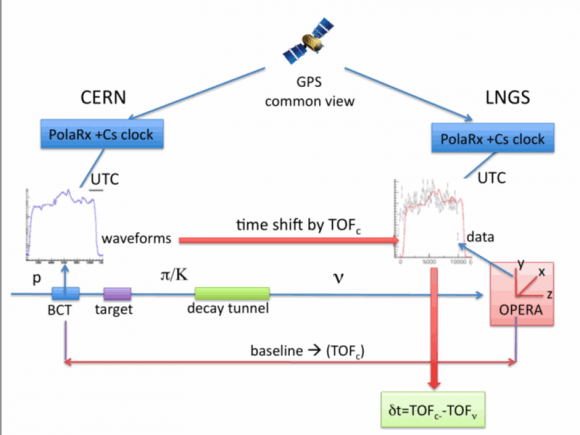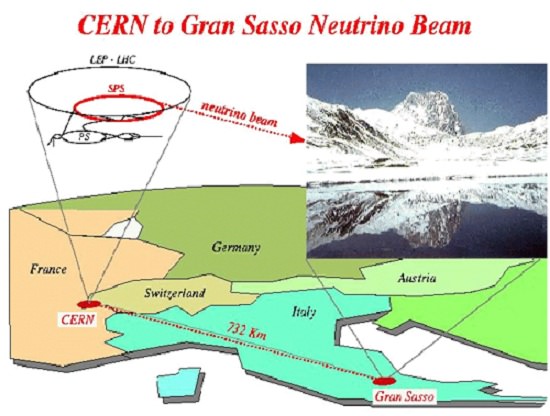[/caption]
The recent news from the Oscillation Project with Emulsion-tRacking Apparatus (OPERA) neutrino experiment, that neutrinos have been clocked travelling faster than light, made the headlines over the last week – and rightly so. There are some very robust infrastructure and measurement devices involved that give the data a certain gravitas.
The researchers had appropriate cause to put their findings up for public scrutiny and peer review – and to their credit have produced a detailed paper on the subject, beyond just the media releases we have seen. Nonetheless, it has been reported that some senior members of the OPERA research team declined to be associated with this paper, considering that it was all a bit preliminary.
After all, the reported results indicate that the neutrinos crossed a distance of 730 kilometres in 60 nanoseconds less time than light would have taken. But given that light would have taken 2.4 million nanoseconds to cross the same distance – there is a lot hanging on such a proportionally tiny difference.
It would have been a different story if the neutrinos had been clocked at 1.5x or 2x light speed, but this is more like 1.0025x light speed. And it would have been no surprise to anyone to have found the neutrinos travelling at 99.99% of light speed, given their association with the Large Hadron Collider. So, confirming that they really are exceeding light speed, but only by a tiny amount, requires supreme confidence in the measuring systems used. And there are reasons to doubt that there are grounds for such confidence.
The distance component of the speed calculation had an error of less than 20 cm out of the 730 kilometres path, or 0.00003% if you like, over the data collection period. That’s not much error, but then the degree to which the neutrinos are claimed to have moved faster than light isn’t that much either.
But the travel time component of the speed calculation is the real question mark here. The release time of neutrinos from the source could only be inferred as arising from a 10.5 microsecond burst of protons from the CERN Super Proton Synchrotron (SPS) – fired at a graphite target, which then releases neutrinos towards OPERA.
The researchers substantially restrained the potential error (i.e. 10.5 microseconds) by comparing the time distributions of SPS proton release and neutrino detection at OPERA over repeated trials, to give a probability density function of the time of emission of the neutrinos. But this is really just a long-winded way of saying they could only estimate the likely travel time, more or less. And the dependence on GPS satellite links to time stamp the release and detection steps represents a further source of potential measurement error.

It’s also important to note that this was not a race. The 730 kilometre straight-line pathway to OPERA is through the Earth’s crust – which is virtually transparent to neutrinos, but opaque to light. The travel time of light is hence inferred from measuring the path distance. So it was never the case that the neutrinos were seen to beat a light beam across the path distance.
The real problem with the OPERA experiment is that the calculated bettering of light speed is a very tiny margin that has been measured over a relatively short path distance. If the experiment could be repeated by firing at a neutrino detector on the Moon say, that longer path distance would deliver more robust and more convincing data – since, if the OPERA effect is real, the neutrinos should very obviously reach the Moon quicker than a light beam could.
Until then, it all seems a bit premature to start throwing out the physics textbooks.
Further reading:
Adam et al Measurement of the neutrino velocity with the OPERA detector in the CNGS beam.
A contrary view – including reports than not all the Gran Sasso team are on board with the FTL neutrino idea.

